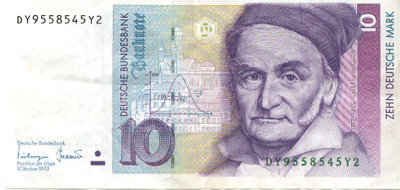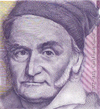Karl Friedrich Gauss
Gauss is recognized as one of the greatest mathematicians of all time, surely ranking with Archimedes and Newton in stature. His work had far-ranging consequences on modern geometry, algebra, number theory and physics. Indeed, the unit of intensity of magnetic fields is called the gauss in recognition of his fundamental work on magnetism and electricity.
In probability and statistics he invented the method of least squares and the fundamental laws of a probability distribution. He was among the first to recognize the importance of the normal distribution, which is still called Gaussian today.
Having a personality described as "glacial" by contemporaries, Gauss worked largely in isolation and, by choice, much of his work remained unpublished in his lifetime. Some of his most fundamental insights were limited to his letters, his notebooks or highly cryptic papers. In comparison to their influence, his writings then were sparse; still his work showed a depth of intuition and understanding that inspired the next several generations of mathematicians.
Prior to the introduction of the euro, the Federal Republic of Germany honored Gauss by placing his portrait, along with a graph of the normal distribution, on the ten mark note.

Born: April 30, 1777, Brunswick, Germany
Died: February 23, 1855, Göttingen, Germany
The premiere site for biographies of mathematicians on the web is at The University of Saint Andrews in Scotland; this is the primary source of the information in these short biographies. Some biographies used additional web resources as noted in the biography.
The postage stamp images came from a wonderful site on mathematicians on stamps maintained by Jeff Miller, a mathematics teacher in Florida.
The Free Internet Encyclopedia Wikipedia is also an excellent source of information and was used as a reference for many bographies.
The opinions expressed in these biographies are those of the author and do not reflect official views of the University of Oklahoma.
